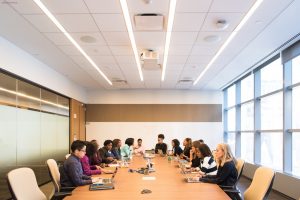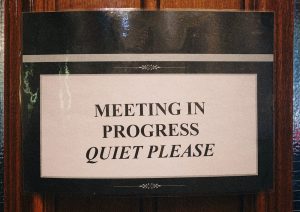The Opportunity Anglian Water, a leading water services company in the UK, wanted support in…

Quick Glance Case Study: Meeting Efficiency and Effectiveness
“The Ease/Impact Matrix was critical in helping us to identify some quick wins that would improve efficiency, increase employee morale and help the Senior Leadership Team to focus on what really matters to the business”
After completing a ChangeWise Lean Practitioner training course one candidate submitted the following work-place project to gain their qualification to LCS Level 1c.
The Business Challenge
As part of the preparation and development for key business programmes, our client undertook a number of stakeholder meetings where several key projects were identified and presented. There was a great deal of frustration around the effectiveness of these meetings which were needed to help understand business performance and ensure risk and compliance requirements were met.

The meetings involved a vast number of the Senior Leadership Team (SLT) and other key business representatives. The long duration meant removing key decision makers from the operations for extended periods of time, causing delays and frustration. In order for the business to work more effectively and efficiently, and thereby improve team performance, it was agreed a full review of the meeting preparation, execution and post-activities would take place.
Key people involved from client site
The team consisted of key stakeholders from the Senior Leadership Team
Lean Methodology Employed
DMAIC (Define, Measure, Analise, Improve, Control)
The candidate completed a full Lean review of the end-to-end current state process.
Various Lean methodologies were employed, specifically SIPOC, Value Stream Mapping, Value and Non-Value Add Analysis, 7 Wastes and 7 Service Wastes, Root Cause Analysis (fishbone diagram), ease/impact matrix
Key Current State Findings
A SIPOC identified 5 key process steps that occur as part of the meetings, and a smaller working group of key stakeholders were surveyed to understand the strengths and areas for development for the meeting.
 Photo by Jon Tyson on Unsplash
Photo by Jon Tyson on Unsplash
The SLT meetings were scheduled to run all day, but attendees reported that they could only add value for specific, short sections of the agenda.
The fishbone method was utilised to better understand the root causes of inefficiencies:
- Data and information not available in advance; non-value add time spent searching for and reviewing information during the meeting
- Several repeating activities
- A number of non-value-add activities
- Incorrect attendee lists: the right people were often not in the room, along with attendees who were not required or could not add value
- Timings: meeting length typically required a full day (with some attendees only adding valuable for a few minutes)
Benefits and Outcomes
An ease/impact matrix was used to identify which solutions should be implemented.
Key solutions included the availability of reports and data prior to meetings, the elimination of duplicate items and a revised, relevant attendee list. A process was also created to track the outcomes and benefits following the meetings, and to allow a review in 1 year to assess the effectiveness of both meeting outputs and the implementation of the new approaches
An implementation plan was compiled to identify the clear steps and project plan for the meetings in order to agree how the client could ensure learning and best practice development for further roll out.

The Lean review has not only significantly reduced the meeting time, but it has improved the quality of meeting outputs. The SLT and key business teams are able to spend more value-add time supporting operations and employee morale has increased substantially!
Interested in learning how you might enable more effective meetings and allow your SLT to focus on more value-add activities? Contact us at info@changewise.co.uk
ChangeWise believes employee engagement is the foundation for successful Change. Training and coaching your people to use simple continuous improvement techniques will enable your organisation to continuously adapt and stay ahead in a constantly changing and challenging environment.
For updates and interesting Lean Change insights, connect with us on LinkedIn.
Find out more about our Public Training Courses



